Weimar - 2006
Contents
In June 2006 we visited Weimar in Germany. We rented a Ferienwohnung. Our accommodation was part of a large house. We had the whole ground floor to ourselves and the family who owned the house had the upper floor rooms.
I soon found the best place to relax, have a good read and watch TV!
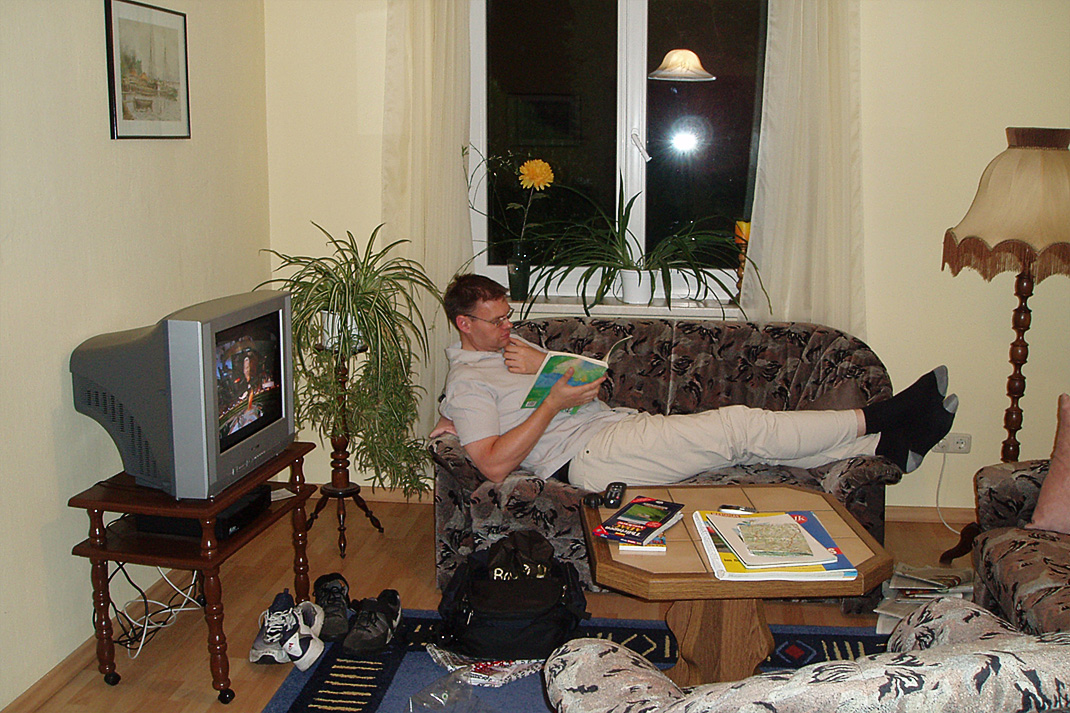
The living room was nicely furnished and opened out into a conservatory.
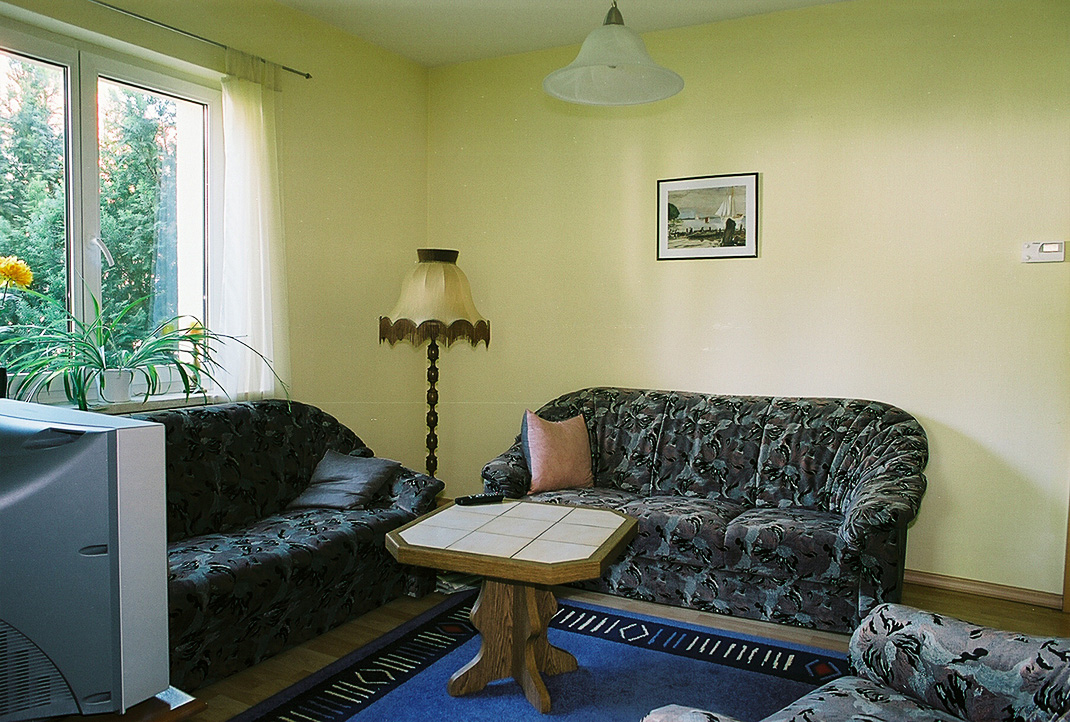
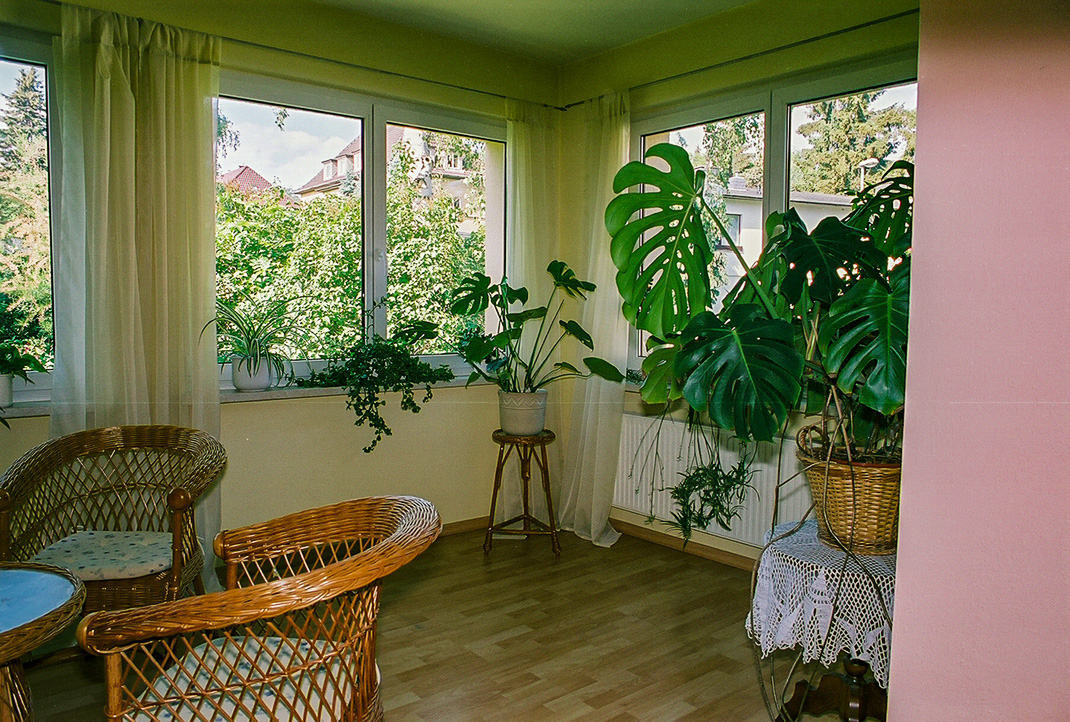
There was also a well-quipped kitchen

and, as always in Germany, the bedroom was spick and span.
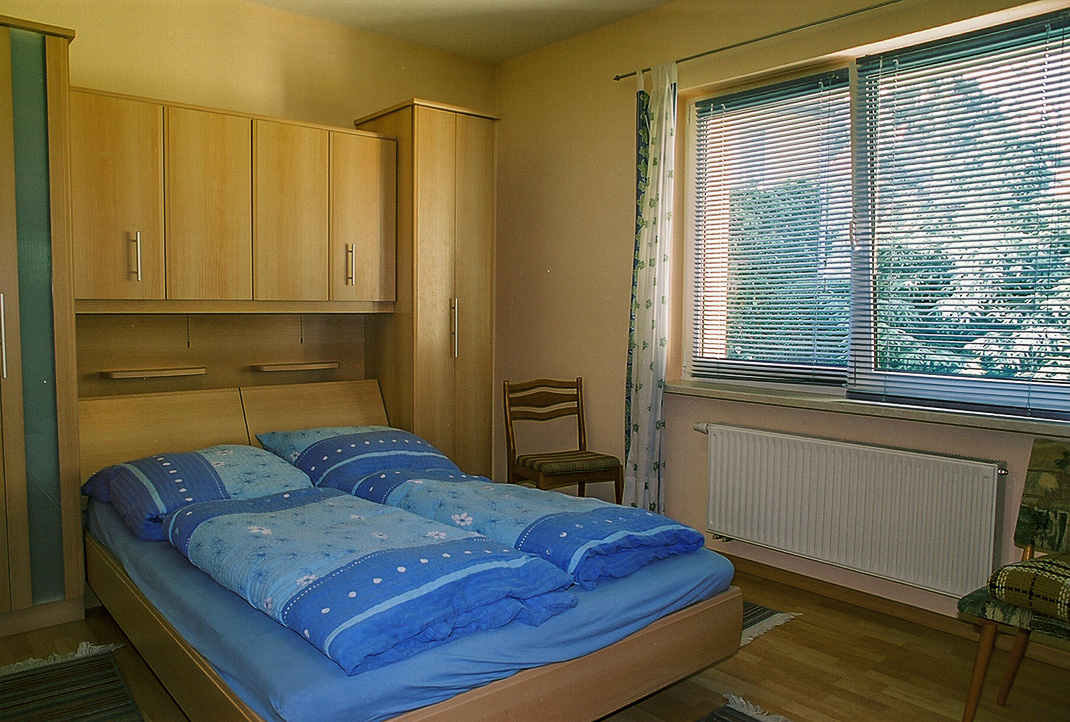
The town of Weimar in Thuringia blossomed under Duchess Anna Amalia, when Goethe, Schiller and Herder lived here.
Famous 19th- and 20th-Century residents included Franz Liszt, Richard Strauss, Friedrich Nietzsche and many distinguished writers and artists associated with the Bauhaus School, which was founded here in 1919.
The town also gave its name to the Weimar Republic, the democratic German State, lasting from World War I to 1933.
In this photo I'm sat in the Town Square awaiting my meal. There were many nice places to eat in Weimar and indeed throughout the whole of Thuringia.
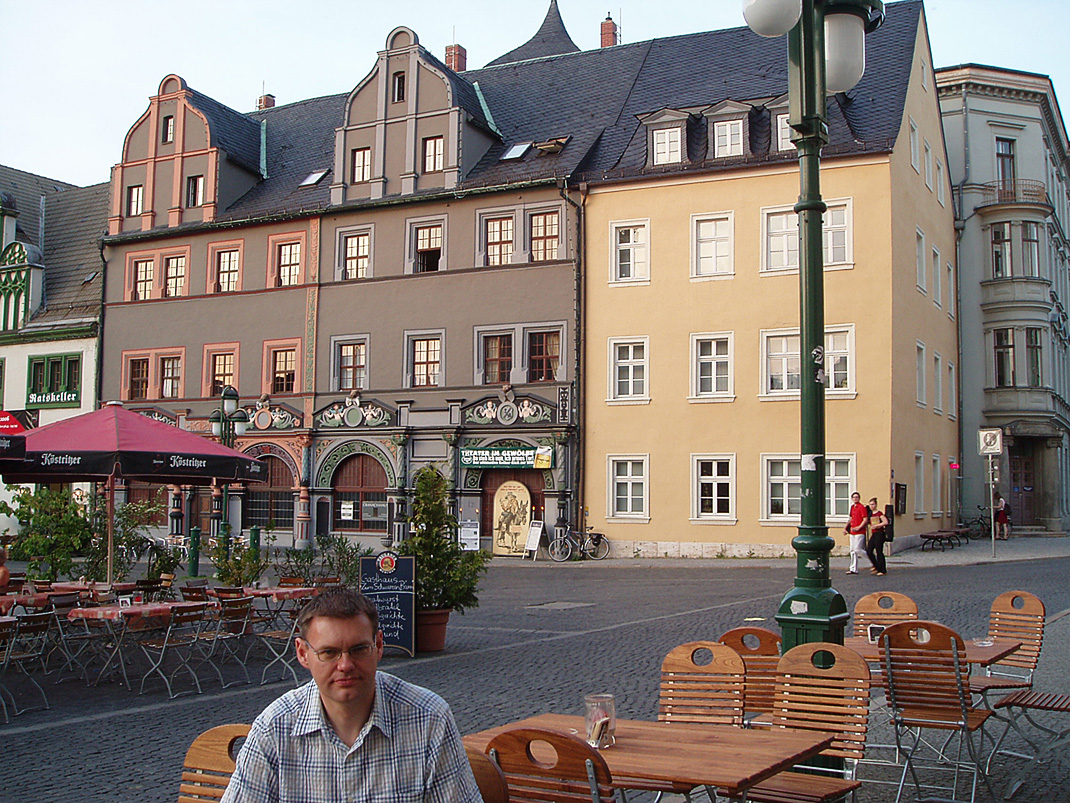
Cycling is always a delight in Germany because the roads are mostly well-maintained and there is an extensive network of dedicated (and well-signed!) cycle routes.
The routes can be along the main roads or, as here, along forest paths.
The tracks in the Weimar area were generally not as good as we had experienced elsewhere in Germany and on our very first ride I did suffer a puncture when my tyre split on a particularly rough section of track. However, as bicycles are quite popular, it was relatively easy to buy a replacement tyre and inner tube.
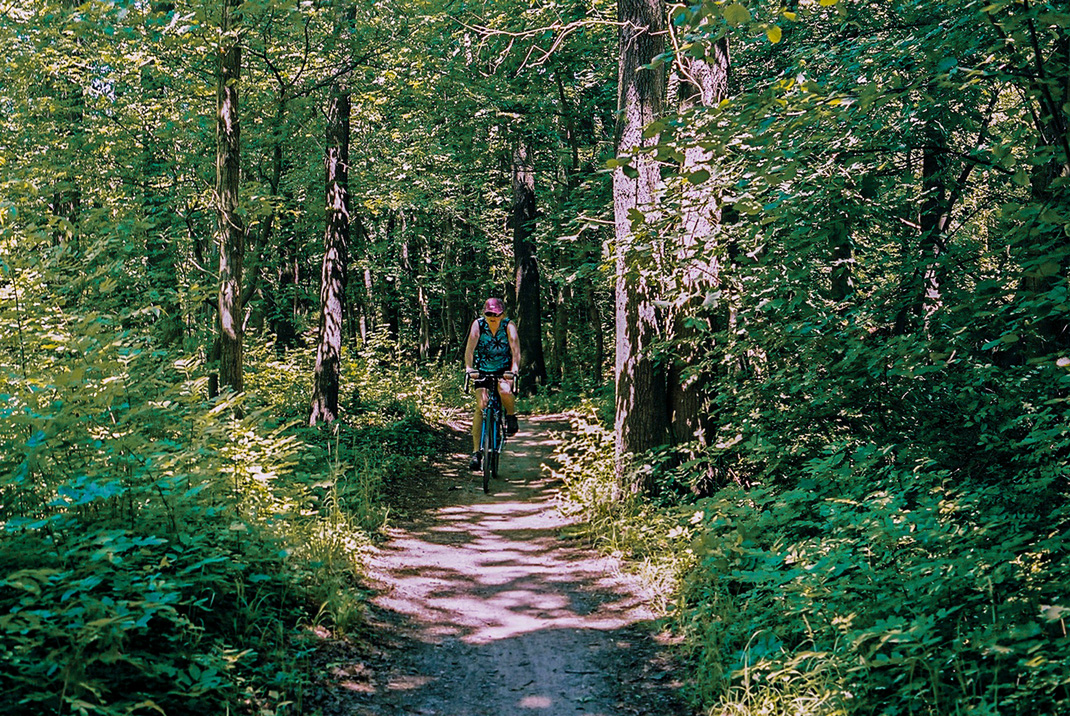
Not too far from Weimar is the town of Eisenach over which towers the mighty fortress and legendary castle known as the Wartburg.
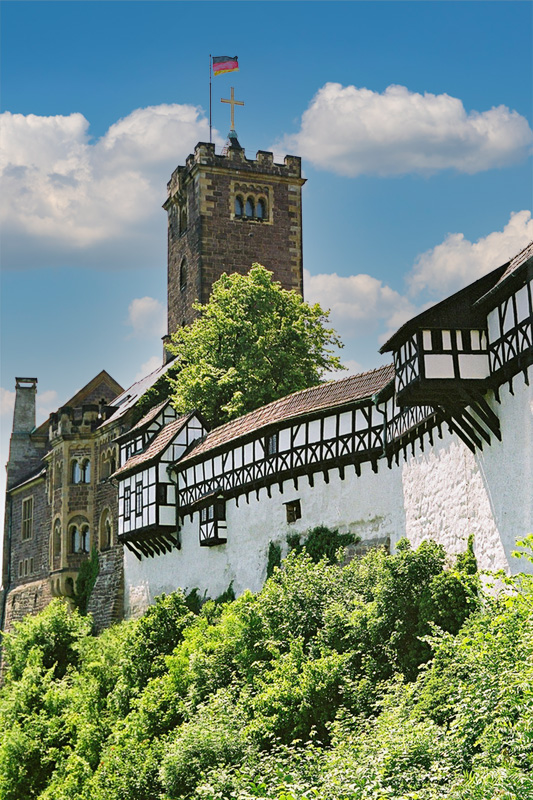
This castle was probably founded in the late 11th-Century by Ludwig the Jumper who, according to myth, when first seeing the hill on which the Wartburg now stands, exclaimed: "Warte, Berg - du sollst mir eine Burg werden!" or, in English, "Wait, mountain - thou shalt become a castle for me!"
Reputedly, it was the setting for the singing contest immortalised by Richard Wagner in his opera Tannhäuser.
Between 1211 and 1228 the castle was the home of Saint Elizabeth of Thuringia, and from 4th May 1521 until March 1522 Martin Luther found refuge here while he translated the New Testament into German.
On October 18, 1817 about 450 students, members of the newly founded German Burschenschaften (fraternities) came together at the castle to celebrate the German victory over Napoleon two years before and condemn conservatism and call for German unity. Heinrich Hermann Riemann, a veteran of the Lützow free corps, philosophy student Ludwig Rödiger, Hans Ferdinand Massmann, a follower of the "father of gymnastics" Ludwig Jahn were some of the leading speakers at the event, which included an autodafé in which symbols of reaction and scraps of parchment with conservative book titles were burned. This event has become known as the Wartburg Festival and is considered a seminal moment in the grass roots movement advocating German unity.
The Castle has been renovated throughout its existence with many earlier parts being overbuilt by later constructions and additions. From 1952 to 1966, for example, the East German Government restored it to what it looked like in the 16th century, which included the Luther Room (below) with its original floor and panelled walls.
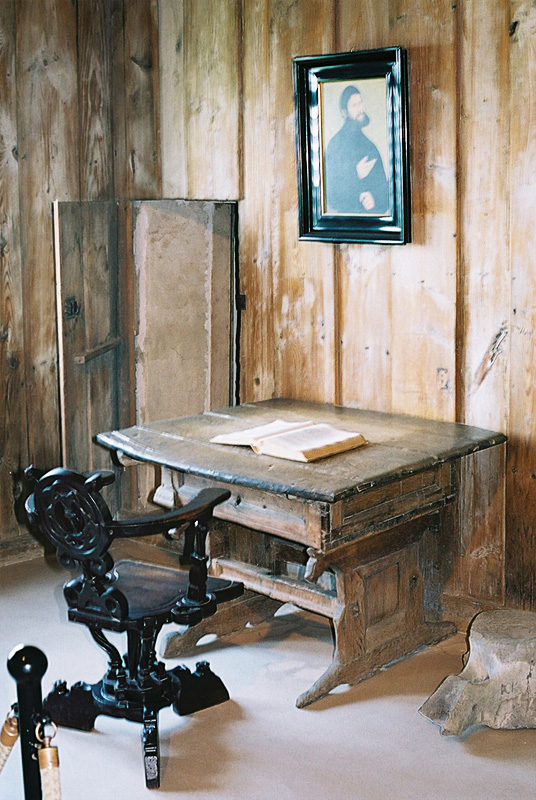
The Romanesque Palace (the Palas, Landgrafenhaus, or Great Hall) is the oldest and architecturally most impressive of the buildings. Besides the chapel, it contains the Sängersaal (Hall of the Minstrels), which is in fact Wagner's setting for Act II of Tannhäuser and the Festsaal (the Feast or Festival Hall), pictured in the photo below, both of which contain fine frescoes by Moritz von Schwind with the theme of the minstrels' contest in the Sängersaal and frescoes of the triumphs of Christianity in the Festsaal. Part of the Palace consists of the original castle as it was between 1157 and 1170, as an image of power and residence of the Thuringian landgraves
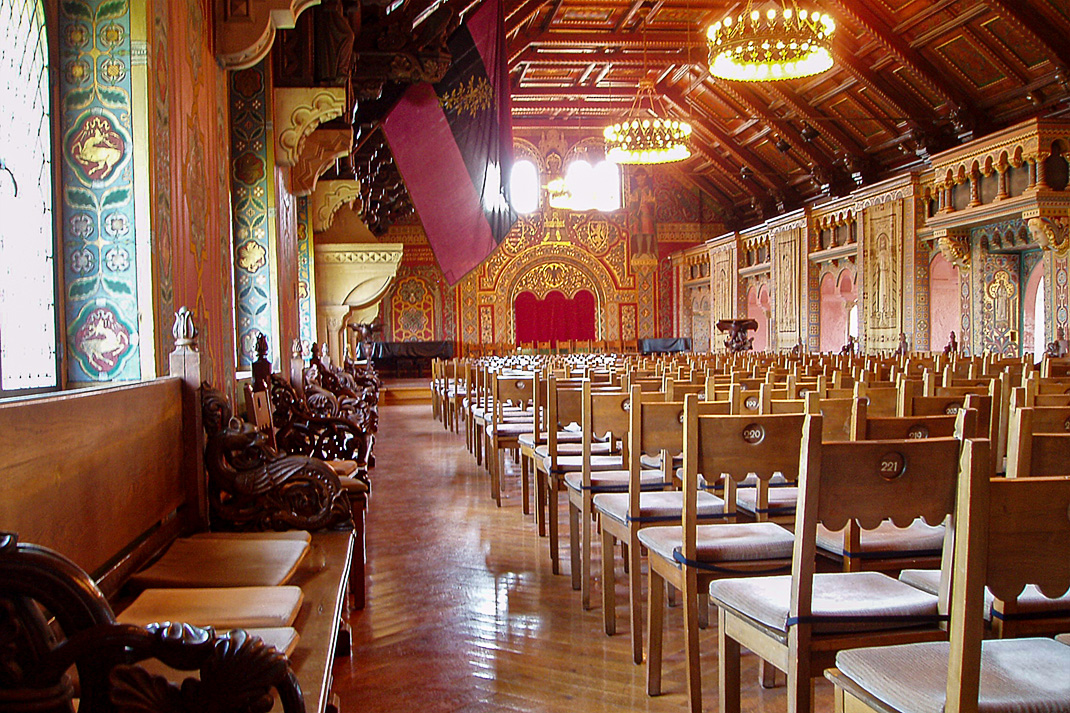
I should mention the Rüstkammer (the armoury) of the Wartburg, which used to contain a magnificent collection of about 800 pieces, from the splendid armour of King Henry II of France, to the items of Frederick the Wise, Pope Julius II and Bernhard von Weimar. All these objects were confiscated by the Soviet Occupation Army in 1946 and have disappeared in the Soviet Union. Two helmets, two swords, a prince's and a boy's armour were, however, found in a temporary store at the time and a few pieces were given back by the USSR in the 1960s. The new Russian Government has been petitioned to help locate the missing treasures.
Off the south-western corner of the market square in Eisenach is Lutherplatz, on which stands the Lutherhaus. It is in fact the home of the Cotta family, with whom Martin Luther boarded as a schoolboy.
The present house, predominantly a half-timbered structure of the 16th- and 18th Centuries, encloses the original, which preserves the two rooms used by the famous lodger. Inside are displays relating to his two periods in Eisenach, plus a large collection of Reformation books and other archive material.
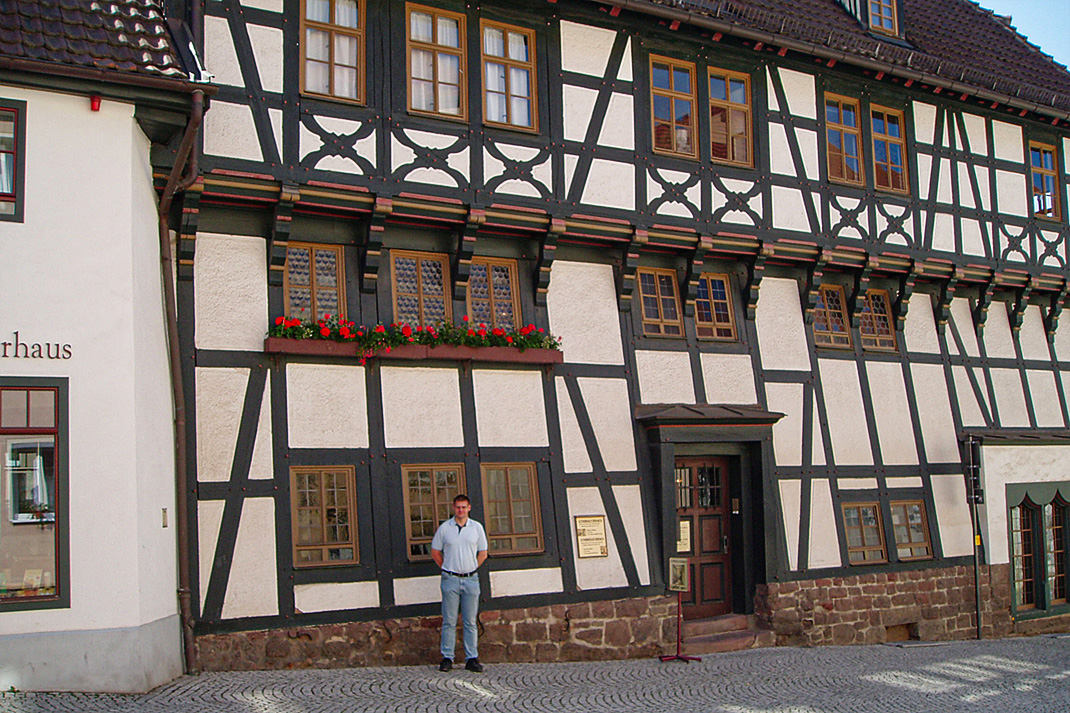
Around 20km west of Weimar lies the Thuringian capital, Erfurt.
It is also the oldest town in the region - its earliest records date from AD729, and in AD742 a bishopric was founded there.
As an important trading post between east and west, the town grew quickly. Erfurt University was founded in 1392 and became a stronghold for radical thought. Martin Luther was one of its distinguished pupils.
Until the 17th-Century, Erfurt was famous for its red dyes extracted from the madder root. In the 18th-Century the town became a horticultural centre, and to this day it hosts important horticultural exhibitions.
In the photograph below you can see the picturesque half-timbered houses that line the Krämerbrücke.

Erfurt is the birthplace of one of Johann Sebastian Bach's cousins, Johann Bernhard Bach (1676-1749), Johann Sebastian Bach's father Johann Ambrosius Bach (1645-1695), Meister Eckhart and also sociologist Max Weber (1864-1920). Bach's parents were married in a small church that still exists on main square Anger.
Johann Pachelbel served as organist at the Prediger church in Erfurt. Pachelbel composed approximately seventy pieces for the organ while in Erfurt. Since 1906 the composer Richard Wetz (1875-1935) lived in Erfurt and became the leading person in the town's musical life. His major works were written here, too.
In 1349, during the wave of pogroms which followed the Black Plague across Europe, the Jews of Erfurt were rounded up, more than 100 killed and the rest driven from the city, and the ghetto burned. Recently, the remains of the medieval synagogue have been discovered beneath newer buildings, and are being restored.
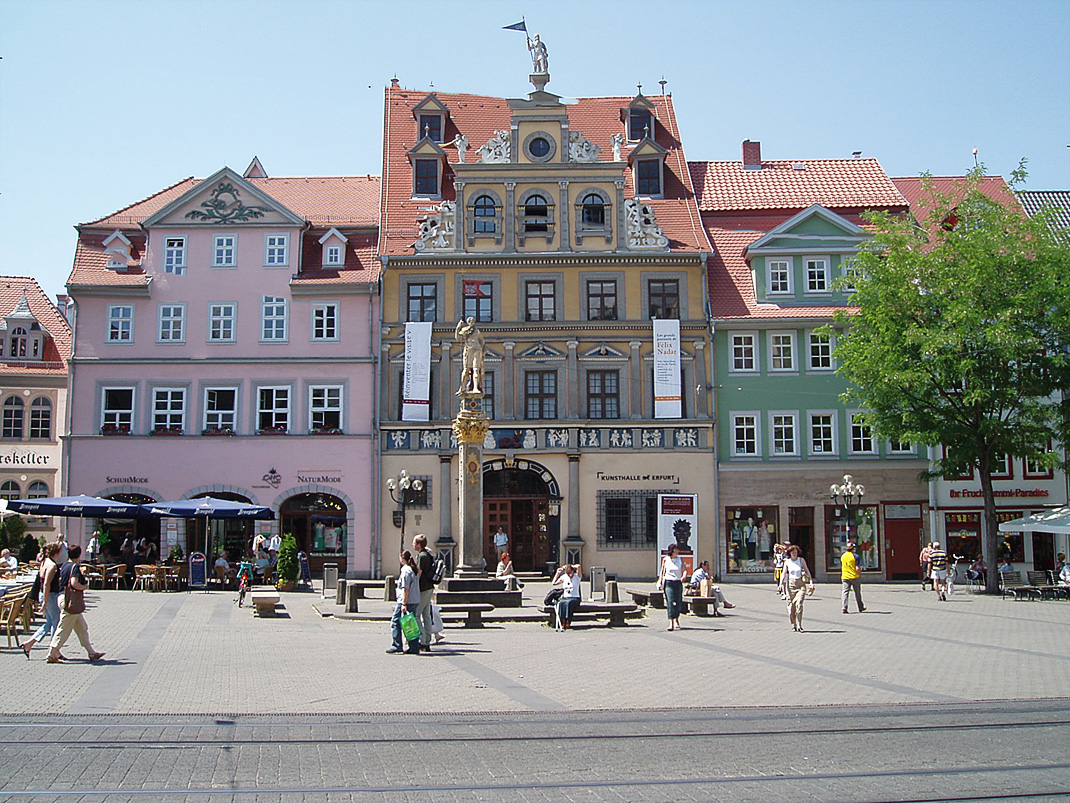
The photo below is a view of Domplatz (Cathedral Square) from the steps leading to the entrance of the cathedral.The main body of this building dates from the 15th-Century and a huge bell, one of the largest in the world, hangs in the centre tower.
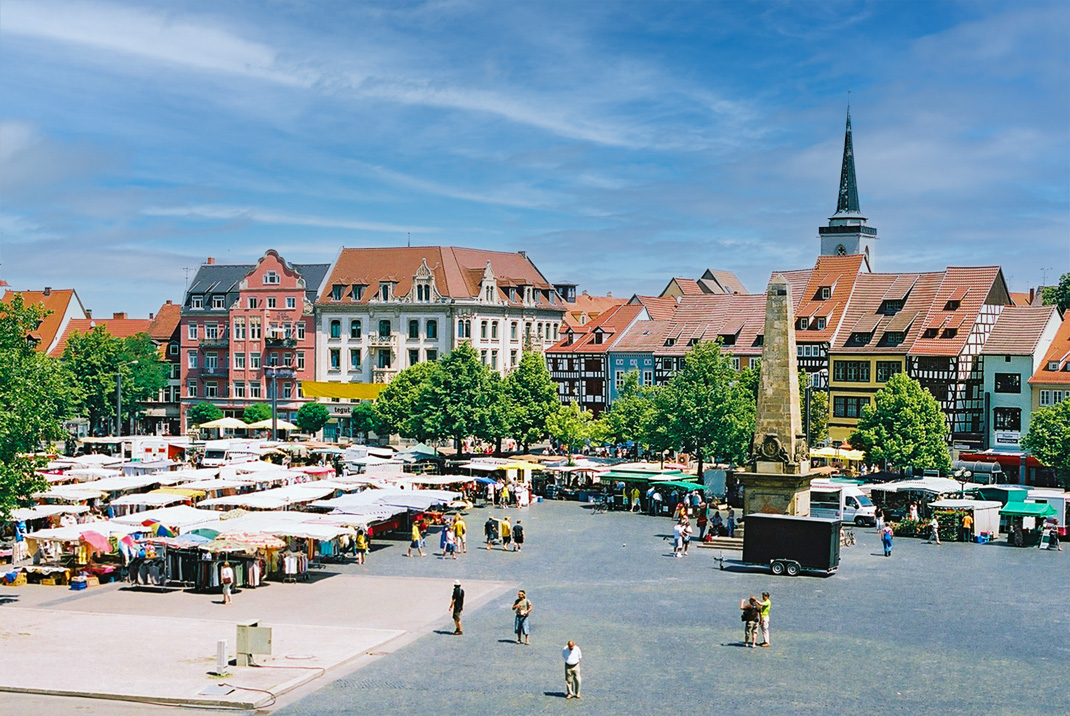
The Saalfelder Feengrotten are in the Guinness Book of Records as the most colourful of their type in all the world. They are one of the most popular tourist destinations in Thuringia and an impressive testimony to medieval mining works.
The present astonishing appearance of the grottoes is the result of a fluke caused by the interaction of natural and human forces.
There was a mine here (mining alum slate and vitriol) from the mid-16th-Century until around 1840 when it was run down and finally closed because there were very little stocks left and the demand from the chemical industry had slumped.
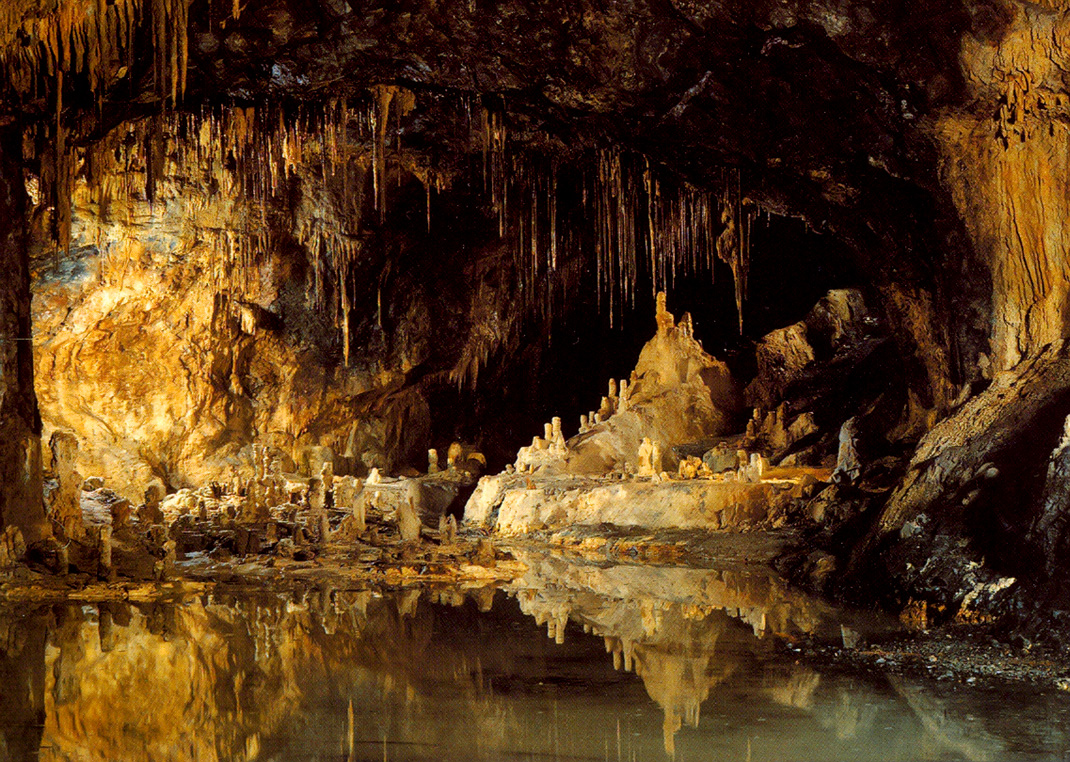
In 1910 waters rich in mineral resources were found pouring out of the abandoned mine and an investigation of its interior revealed that oxidization had turned the galleries into a natural drip-water cave, with stalactites and stalagmites formed from iron phosphate, and the walls cloaked in an astonishing kaleidoscope of colours.
In the photograph you can see the Märchendom (Fairytale Cathedral), also known as the Gralburg (Holy Grail Castle) because of its uncanny resemblance to a Wagnerian theatre set.
Whilst we were in the area, we travelled over to Leipzig to meet up with our friend, Karin, who lives in Stollberg, near Chemnitz. Karin is stood to my right-hand side (or the left as you look at the photo!).
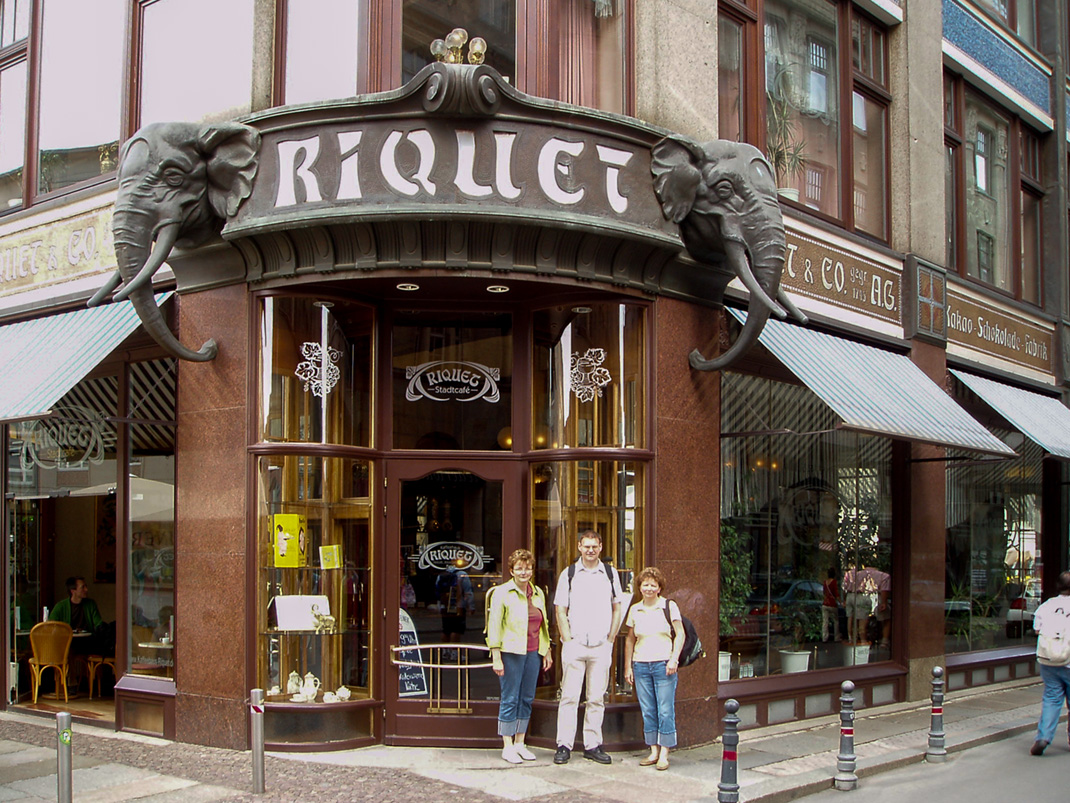
Johann Sebastian Bach (21 March 1685 - 28 July 1750) was a prolific German composer and organist whose sacred and secular works for choir, orchestra and solo instruments drew together the strands of the Baroque period and brought it to its ultimate maturity. Although he introduced no new forms, he enriched the prevailing German style with a robust contrapuntal technique, a control of harmonic and motivic organisation from the smallest to the largest scales, and the adaptation of rhythms and textures from abroad, particularly Italy and France. He is regarded as one of the greatest composers of all time.
Revered for their intellectual depth, technical command and artistic beauty, JS Bach's works include the Brandenburg concerti, the Goldberg Variations, the keyboard Suites and Partitas, the Mass in B Minor, the St Matthew Passion, The Musical Offering, The Art of Fugue, Sonatas and partitas for solo violin, the Six Suites for Unaccompanied Cello, and a large number of cantatas, of which about 220 survive.
Johann Sebastian Bach was born in Eisenach, Germany to an extraordinarily musical family - for more than 200 years, the Bach family had produced dozens of worthy performers and composers during a period in which the church, local government and the aristocracy provided significant support for professional music making in the German-speaking world, particularly in the eastern electorates of Thuringia and Saxony. Bach's father, Johann Ambrosius Bach, was a talented violinist and trumpeter in Eisenach, a town of some 6,000 residents in Thuringia, and held a post involving the organisation of secular music and participation in church music. His uncles were all professional musicians, ranging from church organists and court chamber musicians to composers.
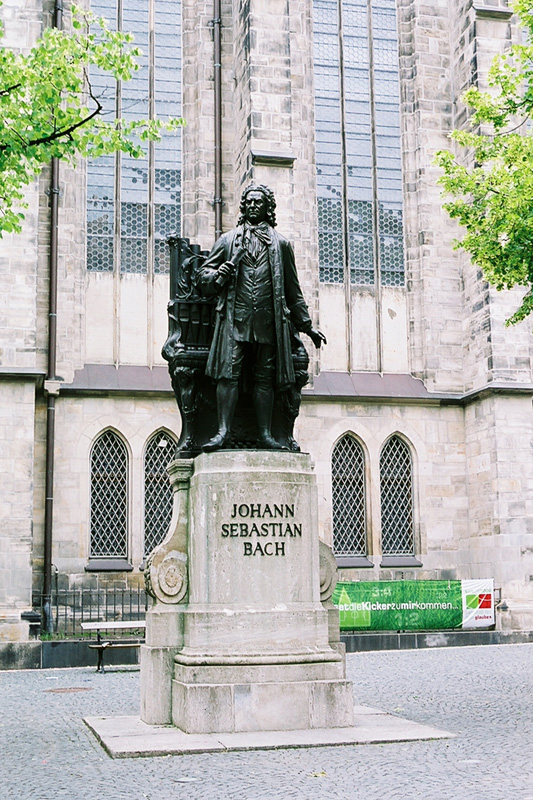
In 1723, Bach was appointed Cantor of the Thomasschule, adjacent to the Thomaskirche (see photograph below) in Leipzig, as well as Director of Music in the principal churches in the town. This was a prestigious post in the leading mercantile city in Saxony, a neighbouring electorate to Thuringia. Apart from his brief tenures in Arnstadt and Mülhausen, this was Bach's first government position in a career that had mainly involved service to the aristocracy. This final post, which he held for 27 years until his death, brought him into contact with the political machinations of his employer, the Leipzig Council. The Council comprised two factions: the Absolutists, loyal to the Saxon monarch in Dresden, Augustus the Strong; and the City-Estate faction, representing the interests of the mercantile class, the guilds and minor aristocrats. Bach was the nominee of the monarchists, in particular of the Mayor at the time, Gottlieb Lange, a lawyer who had earlier served in the Dresden court.
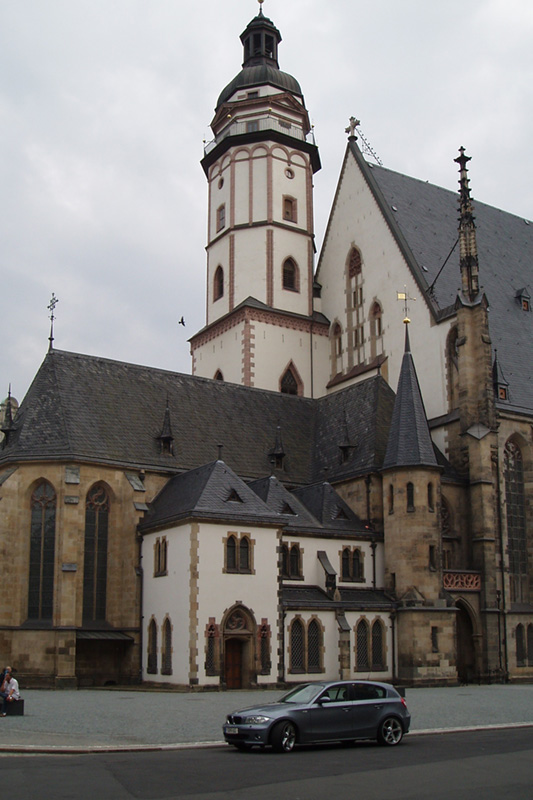
In return for agreeing to Bach's appointment, the City-Estate faction was granted control of the School, and Bach was required to make a number of compromises with respect to his working conditions. Although it appears that no one on the Council doubted Bach's musical genius, there was continual tension between the Cantor, who regarded himself as the leader of church music in the city, and the City-Estate faction, which saw him as a schoolmaster and wanted to reduce the emphasis on elaborate music in both the School and the Churches. The Council never honoured Lange's promise at interview of a handsome salary of 1,000 talers a year, although it did provide Bach and his family with a smaller income and a good apartment at one end of the school building, which was renovated at great expense in 1732.
The Thomaner Chor, of which Bach was choirmaster during his time at St. Thomas' Church, remains one of the most famous boys' choirs in the world. We were fortunate to hear them sing - we were in Leipzig on Saturday, the day of the week when the choir gives free public recitals.
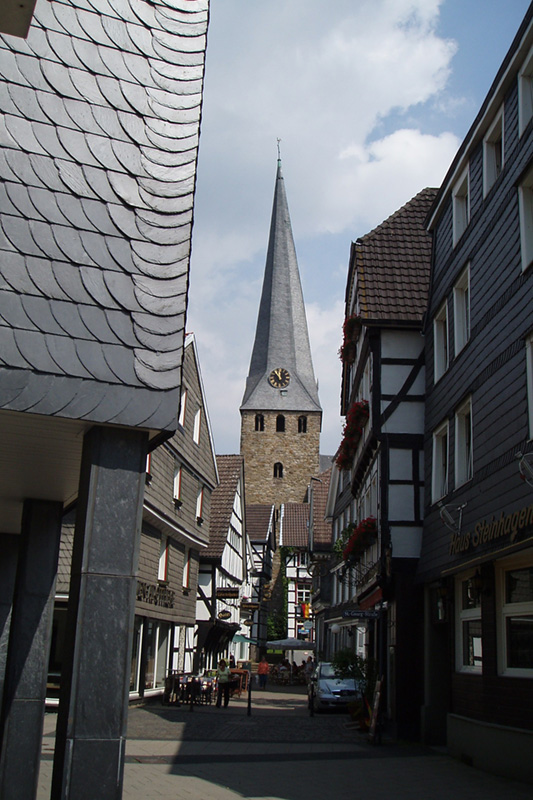
On our way home we stayed with our friends, Heather & Dieter, at their house in Herbede, North Rhine-Westphalia. Nearby is the lovely small town of Hattingen which is distinguished by a church with a crooked spire. In real life it is quite striking - it is in fact much more crooked than the photograph suggests.